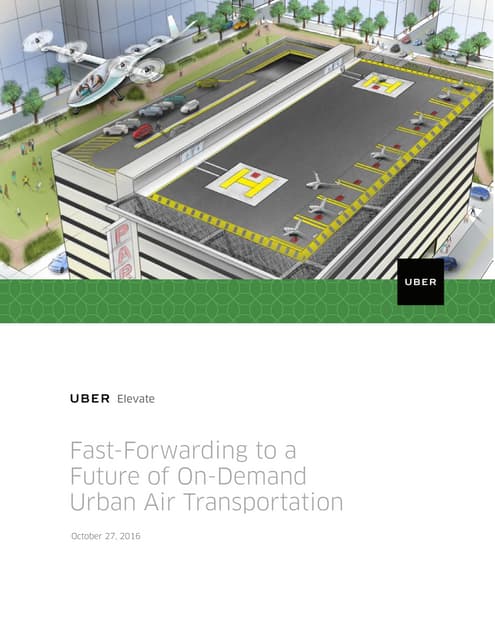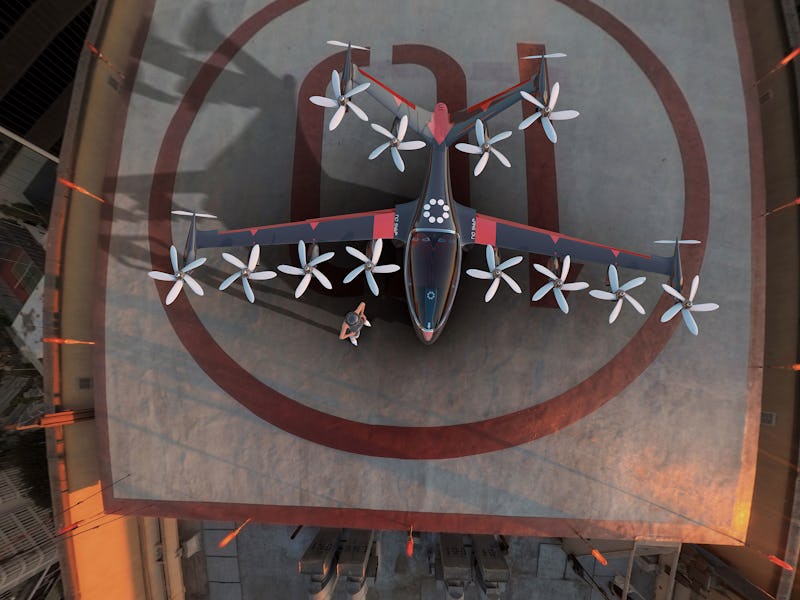Uber has revealed its plan for a network of vertical take-off and landing (VTOL) aircraft that will essentially serve as airborne Ubers. It’s called Uber Elevate, and it’s the latest effort to finally deliver on the decades-old promise of flying vehicles anyone will be able to purchase.
The revelation of Uber Elevate comes shortly after the company’s head of products, Jeff Holden, said Uber might introduce flying cars within a decade. Airbus Group also said recently that it plans to make a flying taxi called “Vahana,” available to some consumers by 2020.
Uber has outlined its plans for Elevate. But some questions about filling the sky with flying taxis remain — here are the five most likely to weigh on people’s minds after Uber’s announcement. Perhaps some will be addressed during the first Elevate conference tentatively scheduled for some time in early 2017.
Will these be more like taxis or airplanes?
Uber’s pitching these networks of VTOL aircrafts as flying taxis. But will riding in one of these vehicles be more like hailing a taxi on the street, or flying somewhere in a more traditional aerial vehicle? Right now the company’s plans for these flying taxis looks like a hybrid of both systems.
Uber said in its white paper that people will be able to hail an aircraft via Elevate, using their smartphones. But the vehicles won’t come down to the street to pick them up — riders will have to go to designated hubs to ride one of the aircrafts. They’ll also have to sit through “short pre-flight checks” that are likely similar to safety presentations given on planes. It’s unclear how Elevate might eventually make the process smoother.
Where are these things going to park?
Despite how things may seem when you’re trying to park your own vehicle, most cities have plenty of places to leave a car for a while. They also have somewhere for planes to rest when they aren’t being used. VTOLs don’t fit in either structure, so where are they supposed to park?
Uber’s plans currently involve converting the roof of parking garages into miniature hangars where Elevate’s vehicles can park, takeoff, and land. But the company doesn’t say how the cars displaced by these conversions will be affected, and it readily admits that most cities don’t have the space needed for VTOL networks to operate on a large scale.
Who’s going to own these vehicles?
People weren’t just promised flying cars, they were promised that they would eventually own one for themselves. Uber’s plans don’t include personal VTOLs, though, for a number of reasons explained in the paper:
“We do not expect that VTOLs deployed on ridesharing networks will be owned by individuals, as they will be significantly more expensive and more complicated to operate than cars,” Uber said. “As such, rideshare operators, like Uber, will be able to specify the on-trip experience to a degree similar to that of self-driving cars, even for piloted VTOLs.”
How will self-driving technologies affect these plans?
More control over the experience of riding in these vehicles isn’t the only effect self-driving technologies will have on Elevate. Uber said that autonomous features will be used to reduce the training necessary for pilots to operate these vehicles, and make them safer to use in cities. The company wants to make VTOLs even safer than land-based cars.
“Due to the combination of backup alternatives that exist for VTOLs to ensure safe operation (remote bunker pilots and automated vertiport vehicle flight verification), self-flying VTOLs have the potential to progress at a rapid pace,” Uber said, “Perhaps even more rapidly than cars or aircraft that aren’t operating on a highly structured and standardized vertiport [take-off], and vertistop [landing] infrastructure.”
What’s in store for people in the boonies?
Part of the company’s plan to improve safety is for VTOL networks to be restricted to cities where access to up-to-the-minute weather data is available. The flights will also be restricted, at least initially, to cities that don’t pose risks, due to thunderstorms, snow, ice, and other weather.
That’s great for people who live in cities with decent weather. But what about the people who live in New York —- which has all of those problems — or outside of a dense urban area? Uber’s plans don’t address those areas.
How will the flying taxis be regulated?
Uber is no stranger to regulatory problems. Rules about its platform, how it treats its drivers, and self-driving technologies have all been carefully examined by a number of regulators. How will VTOLs that use autonomous technologies to allow a ridesharing platform be treated by all the regulators it will face?
Uber has a plan for this (shown above), but nobody’s likely to know the answer until the regulators themselves decide to examine the tech.
You may have questions, too, so here’s the full white paper:

